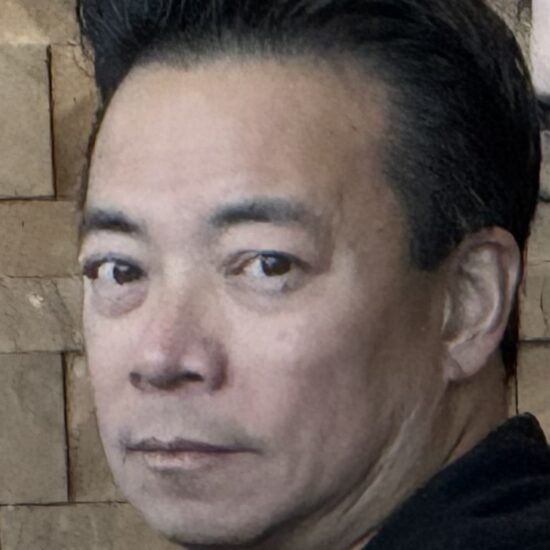
Bob Mackin
Saturday’s civic election could be won or lost in the Broadway Corridor, says Andy Yan.

Andy Yan (SFU)
The director of the city program at Simon Fraser University crunched the numbers from the 2018 election and says watch the crescent-shaped area from Grandview Woodlands and Hastings Sunrise to Kitsilano, a collection of high voter turnout, engaged neighbourhoods populated mainly by renters. Within that is the spine of the crescent, the Broadway Corridor, which is set to undergo a multi-decade evolution.
Mayor Kennedy Stewart and the three councillors from rival Kim Sim’s ABC Vancouver party were among the seven votes for the contentious Broadway Plan in June. Coun. Colleen Hardwick was with the four-vote minority opposing the plan to encourage towers on the Broadway Subway route and she vows to scrap the plan if she wins a majority.

The Kennedy Stewart 2018 voting heat map (Yan/CoV)
“I don’t know if passing the Broadway Plan really garnered the kind of support that they were looking for,” Yan said. “In a way, it almost becomes a referendum on how mayor and council has handled changing growth in the city.”
The Broadway Corridor is where Stewart excelled in 2018 and Ken Sim fell short. When all the votes were counted, Stewart came out 957 ahead. Hardwick, the fifth place finisher who was on Sim’s NPA team in 2018, has her own team now, called TEAM for a Livable Vancouver. Four years ago, she also scored well in the area, but could grow her base of support if there is a backlash to the Broadway Plan.

The Ken Sim 2018 voting heat map (Yan/CoV)
Maps provided by Yan showing the popular vote from each 2018 polling station offer a glimpse at geographic and demographic differences that could repeat on Saturday.
The maps do not account for advance voting. In 2018, 176,450 votes were cast, with 28% early and 1% by mail. In 2014, voters were allowed to cast their ballot anywhere. A Killarney resident can vote in Kitsilano, or vice versa, but Yan said busy Saturday traffic and convenience of voting close to home weigh against so-called open poll voting.
Where was Stewart strong in 2018?
“Areas that are most heavily affected by the Broadway Plan and the development of the current building of the Broadway [subway] line. That’s where he hopes to repeat,” said Yan, sometimes known as the “Duke of Data.”

The Colleen Hardwick 2018 voting heat map (Yan/CoV)
“People are going to decide whether they liked that future that he laid out for them. The Broadway Corridor is ‘Kennedy country.’ And, of course, bits on the West End and bits of Grandview Woodlands.”
Where was Sim strong in 2018?
“He doesn’t resonate in the Downtown Eastside, but he certainly resonates throughout the Olympic Village and Yaletown/Concord Pacific,” Yan said. “And, of course, some sizeable votes on the West Side, the Southwest and, and the Southeast.”
Where was Hardwick strong in 2018:
“Colleen lives in Kitsilano, so she’s able to pull a certain level higher than Ken in that because of just really her own kind of personality and history,” Yan said. “Now what’s interesting is that Grandview Woodlands was not a strong place for the NPA in general. In this forthcoming election how much Grandview Woodlands would pull-in for Hardwick, the [TEAM] mayoral candidate?”
The NPA’s 2022 mayoral candidate, Fred Harding, was with Vancouver 1st in 2018 when he finished sixth and picked up most of his votes in the Southeast corner of the city, especially Sunset, Killarney and Renfrew-Collingwood. His 2022 campaign has focused on Mandarin-speaking voters, who skew westward.

Kirby-Yung, Carr and Boyle voting heat maps from 2018 (Yan/CoV)
Downballot, Yan noted that perennial vote leader Adriane Carr of the Greens dominated from Kitsilano to Strathcona. Similarly for Christine Boyle, the OneCity de facto leader. She excelled in the Southeast, around Collingwood, the city’s densest neighbourhood. Yan called it “Christine country,” but wonders how she will fare in 2022, after so closely aligning with Stewart on the Broadway Plan.
“Are people happy or unhappy with the kinds of decisions that have been made around the stations and the surrounding neighbourhoods?” Yan asked. “Is this a sign that there could be a blowout for Christine Boyle and Kennedy Stewart?”
The 10th and last council seat won in 2018 went to the NPA’s Sarah Kirby-Yung, now with ABC. She had consistent votes around the city, except the Strathcona and Grandview Woodlands and pockets around downtown.

The Broadway Corridor: the key to power in the Oct. 15 election, according to Andy Yan (Yan/CoV)
Indeed, a hint of what’s to come was made in a solicitation to ABC supporters from campaign manager Kareem Allam. His Oct. 12 email said he spent $10,000 for a mailout to Yaletown, Coal Harbour, the West End and Eastside, “neighbourhoods we weren’t able to reach by door knocking.” The email said he is also planning a $20,000 digital ad blitz on Facebook, Google and YouTube.
Wildcards? Yan said keep an eye on the growing East Fraserlands — also known as the River District — and the area around the Olympic Village that densified since 2018.
“Within the Olympic Village are a lot of very unhappy parents, in terms of the lack of a school, which is probably going to have some knock-on effects in terms of the school board race,” he said.
Some polls indicate as many as four in 10 voters are undecided. Voters are faced with a daunting array of choices on a ballot nearly arm-length: 15 candidates vying for mayor, 59 to aiming to fill city council’s 10 seats, 32 contesting the seven seats on park board and 31 in the race for the nine school board trusteeships.
Turnout in 2018 was 39%, a drop from 2014’s 43% and far from the 2002 high of 50%.
Elections from 2005 to 2011 averaged 33%,
Support theBreaker.news for as low as $2 a month on Patreon. Find out how. Click here.











